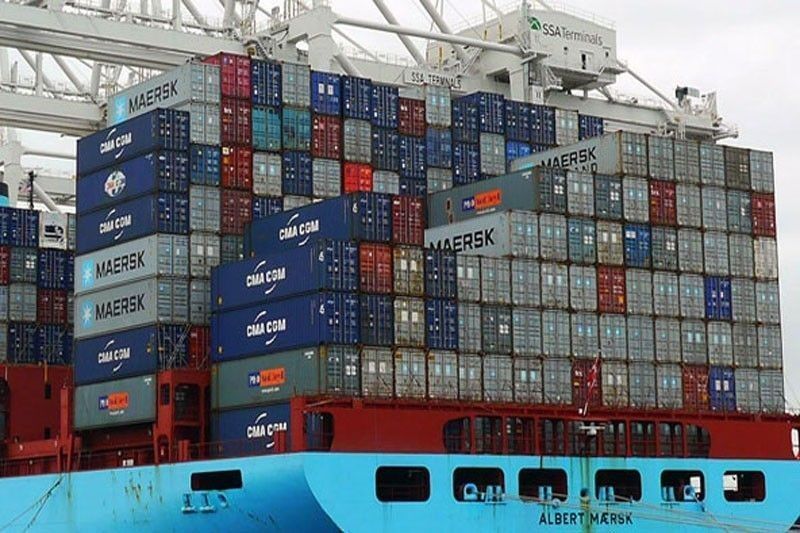Exports return to growth in November

MANILA, Philippines — Exports returned to positive territory in November, after sinking into the red in October, reflecting improved performance in major trading partners such as China, Taiwan and the United States.
Trade figures released by the Philippine Statistics Authority (PSA) showed a faster annual recovery in exports versus imports and a weaker annual growth in total external trade in goods in November.
Total trade amounting to $13.31 billion contracted by 10.6 percent annually from the pre-pandemic level of $14.9 billion in November 2019.
Imports and exports were almost evenly distributed, with 56.5 percent in inbound shipments and the rest bound for abroad.
Export sales grew three percent annually to $5.79 billion in November from the pre-pandemic level of $5.62 billion in the same month in 2019. This was a reversal of the 1.2 percent and 0.2 percent annual declines in October 2020 and November 2019, respectively.
This was the fastest growth since January 2020 and among the fastest in pre-pandemic months.
Strong growth was seen in the outbound shipments of cathodes, gold, coconut oil, ignition wiring sets, metal components, chemicals and in electronic products, which accounted for 60.9 percent of total exports.
“The pickup in exports may be tied to improved performance in particular in China and Taiwan as these two countries have been able to get a better hold of the virus and return to more normal economic operations,” said Nicholas Mapa, senior economist at ING Bank in Manila.
“Exports to the US also provided a lift. In particular, exports of electronics products helped drive the recovery given its substantial size compared to the total export portfolio,” he said.
Total export earnings from January to November amounted to $57.97 billion, lower by 11.1 percent compared to the export value in the same 11-month period the previous year.
Imports, meanwhile sustained their decline for the 19th consecutive month since May 2019 as the economy remains in recession.
Total imports declined by 18.9 percent annually to $7.52 billion in November from the pre-pandemic level of $9.28 billion in the same month in 2019. This was a faster decline coming from an annual contraction of 18.8 percent in October 2020 and 4.5 percent in November 2019.
Inbound shipments fell across the board in November with the rate of decline fastest in transport equipment, industrial machinery, and mineral fuels – all of which are crucial to production.
Imports from the following countries continued to decline year-on-year in November: Thailand, US, japan, Singapore, Hong Kong, Taiwan, South Korea, Indonesia and China.
Total imports in the 11 months of 2020 amounted to $77.63 billion, a 24.5 percent decline in value from January to November 2019.
“Relatively slower imports compared to a year ago and vs. pre-COVID-19 levels still reflects relatively slower recovery in the local economy as many businesses still operate way below the usual capacity amid social-distancing and other stringent health protocols to prevent COVID-19 from spreading further,” said Michael Ricafort, chief economist of the Rizal Commercial Banking Corp. (RCBC).
“The Philippines has been a net importing country in recent years, so economic slowdown largely due to COVID-19 fundamentally reduces the demand for imports.”
Trade deficit in November 2020 narrowed the most in three years to $1.73 billion compared with $3.65 billion in the same month in 2019.
As this translates to around $1.9 billion less demand for US dollars to pay for imports, the narrower deficit will support the peso’s appreciating trend versus the dollar.
“With expectations for weak imports in 2021 and resilient remittances in the coming months, we may see the peso move sideways with an appreciation bias, especially if the US dollar remains on a weakening trend due to Fed policy,” said Mapa.
Trade deficit from January to November 2020 at $19.7 billion was sharply narrower compared with $37.7 billion in the same period the previous year, a difference of $18 billion in demand for US dollars to pay for imports.
Ricafort said that for the full year 2020, the trade deficit can be expected to settle at $20 billion, reflecting slower demand largely due to the pandemic.
- Latest
- Trending






























